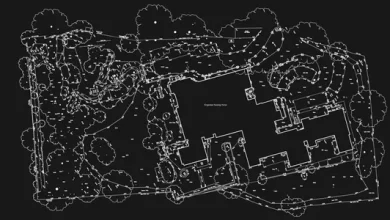Table of Contents
In our increasingly digital world, extracting text from images has become more vital than ever. From students digitizing notes to businesses streamlining their workflows, the concept of converting an “image to text” holds transformative potential. This advancement combines artificial intelligence and optical character recognition (OCR) to turn images of written or printed content into editable and searchable text formats.
In this blog post, we’ll delve into how “image to text” technology works, its applications, and why it’s pivotal for various industries in 2025 and beyond. We’ll also focus on strategies to make the most of these tools and trends shaping their development.
The Basics of Image to Text Technology
At the core of image to text conversion is Optical Character Recognition (OCR). This technology analyzes the pixels of an image, identifies patterns resembling characters, and translates them into machine-readable text. Whether it’s a photograph, screenshot, or scanned document, OCR tools are adept at deciphering the textual data contained within.
Modern-day OCR systems go far beyond identifying standard fonts. They use machine learning models trained on millions of examples to interpret handwritten notes, different languages, or even distorted images. Moreover, advancements like neural networks ensure precision even in less-than-ideal scenarios like blurry or low-resolution images.
Top Benefits of Image to Text Conversion
1. Enhanced Productivity Across Industries
Manually transcribing information from images to text is time-consuming and error-prone. Tools designed for this purpose save countless hours, allowing individuals and teams to focus on higher-value tasks.
For instance, businesses can digitize invoices or contracts, making them easier to store, retrieve, and process without sifting through physical files.
2. Accessibility for All
“Image to text” tools have revolutionized accessibility by aiding visually impaired individuals. Text-to-speech software powered by OCR enables the extraction and vocalization of text from printed material or images, helping users engage more effectively with written content.
3. Simplifying Data Entry
From retail to logistics, OCR-based “image to text” tools make data entry more accurate and efficient. They minimize human errors in fields like banking or insurance, where accuracy is critical.
4. Supporting Multilingual Capabilities
Modern “image to text” tools now support multiple languages, ensuring global usability. They allow users to extract text in one language and instantly translate it, bridging communication gaps across borders.
Practical Applications of Image to Text Technology
1. Education Sector
Students and researchers often work with digital resources, and “image to text” tools play a pivotal role in this arena. By converting pages from books, class notes, or PDFs into text, they make studying and citation easier.
2. Content Creation and Digital Marketing
Marketers can repurpose offline materials or visual data by extracting the text from promotional banners, infographics, or scanned magazines. This makes it easier to craft compelling online campaigns without starting from scratch.
3. Healthcare Documentation
Healthcare professionals spend a considerable amount of time documenting patient information. Using “image to text” systems to digitize handwritten prescriptions and reports helps streamline recordkeeping, benefiting both patients and providers.
4. Legal and Financial Documentation
Law firms and financial institutions handle enormous amounts of paperwork. Image to text solutions assist in digitizing and organizing documents, ensuring compliance and easy retrieval during audits or litigation.
5. Archival Work and Libraries
Converting scanned books, manuscripts, or historical records into searchable digital databases has transformed the way we approach archival work. It ensures the preservation and accessibility of valuable knowledge.
Popular Tools for Image to Text Conversion
Many tools, both free and paid, now facilitate easy text extraction from images. Here are a few worth considering:
- Google Vision AI: Offers advanced OCR capabilities for various use cases, from personal use to large-scale industry deployment.
- Adobe Scan: A widely popular app for scanning and extracting text, ideal for students and professionals alike.
- Tesseract: An open-source OCR engine favored by developers who want to integrate image-to-text capabilities into their applications.
- Text Fairy: A free mobile app offering decent accuracy, primarily used for basic needs.
- ABBYY FineReader: Known for its exceptional text recognition and ability to process complex document layouts.
Selecting the right tool depends on your needs, budget, and level of accuracy required.
Challenges Faced by Image to Text Technology
Despite advancements, “image to text” technology isn’t without its challenges:
1. Poor Image Quality
Low resolution, motion blur, or lighting conditions in photographs can negatively impact the accuracy of text extraction. While modern tools can mitigate these issues to some extent, clear and high-quality images yield the best results.
2. Multilingual Complexity
Although most tools support major languages, niche dialects or rare scripts are still challenging for OCR systems. However, with ongoing improvements in training models, these barriers are slowly being overcome.
3. Privacy Concerns
Handling sensitive information through image to text tools raises privacy concerns, especially when using cloud-based systems. It is crucial to choose platforms with robust data encryption and adherence to compliance standards like GDPR.
Future Trends in Image to Text Technology
1. AI Integration for Higher Precision
The integration of AI and deep learning in OCR tools will lead to near-perfect recognition, even in challenging conditions. Expect future advancements to focus on interpreting more complex layouts, mixed scripts, and technical diagrams.
2. Expanding into AR and VR
Imagine pointing your phone’s AR-enabled camera at a sign in another language and seeing a real-time translation. Such integrations between image to text and augmented reality are already in progress and will enhance global communication.
3. Automation Through APIs
With companies increasingly using APIs to integrate “image to text” into their applications, workflows can be automated end-to-end. This is particularly advantageous for industries like logistics, where seamless automation can cut down operational overheads.
How to Get the Best Results with Image to Text Tools
- Ensure High Image Quality: The sharper and clearer the image, the better the recognition.
- Crop Unnecessary Areas: Tools often struggle when extraneous elements surround the main text.
- Choose the Right Tool: Depending on your usage—personal, academic, or business—opt for a tool with the necessary features.
- Test and Optimize: Test with multiple tools to compare performance, especially for critical projects involving extensive data extraction.
Conclusion
As “image to text” technology evolves, its applications will only grow more diverse and impactful. Whether you’re a student digitizing handwritten notes, a business owner automating document processing, or simply someone looking to declutter paperwork, this technology offers invaluable assistance.
However, staying ahead means choosing tools that keep up with emerging trends, maintaining data privacy, and continuously exploring creative ways to leverage this capability. With the world embracing digital transformation, “image to text” is not just a technological feature—it’s becoming an essential skill for thriving in the 21st century.





